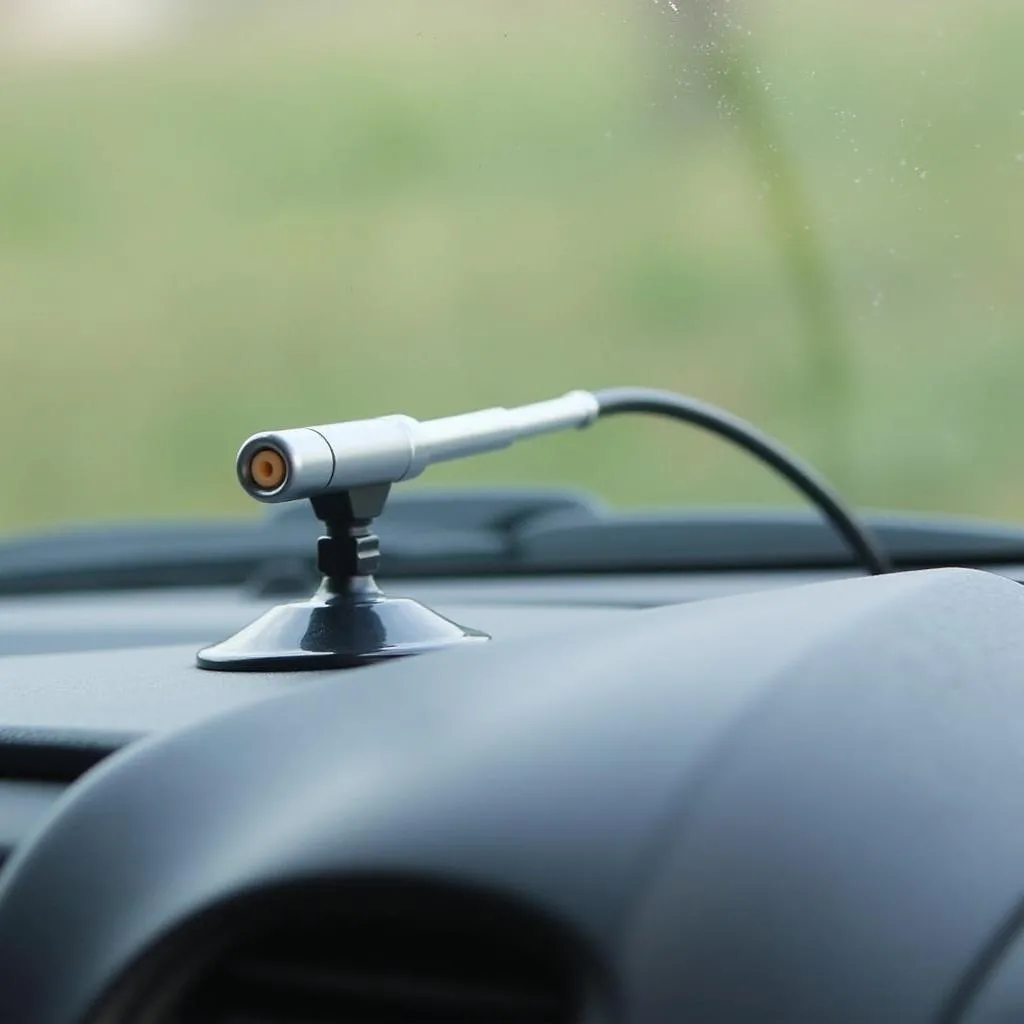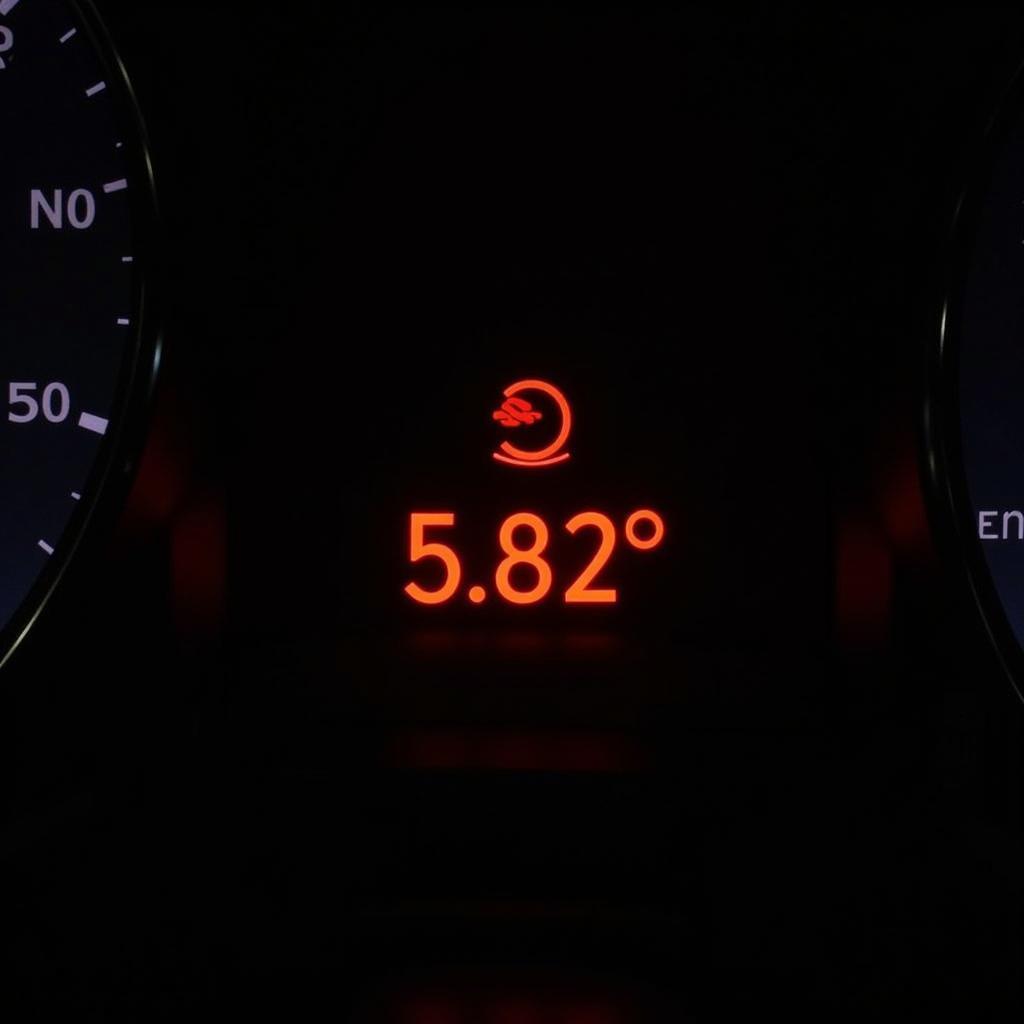When your ABS, traction control, and brake warning lights illuminate simultaneously, it can be a concerning experience. This combination of warning lights, often referred to as “abs traction control brake warning lights all come on,” indicates a potential issue within your vehicle’s braking system that requires attention. Understanding the underlying causes and knowing how to troubleshoot this problem can save you time, money, and potentially prevent a dangerous situation.
If you’ve recently encountered a yellow warning light on your Seat Ibiza, you might find this article helpful as we explore similar warning light issues. Check out our article on Seat Ibiza yellow warning light for more information.
Understanding the Warning Lights
The ABS (Anti-lock Braking System) light indicates a problem with the system that prevents wheel lockup during hard braking. The traction control light signals an issue with the system designed to maintain grip on slippery surfaces. And the brake warning light itself can signify various problems, including low brake fluid, worn brake pads, or a malfunction within the braking system. When all three illuminate together, it suggests a more complex problem affecting multiple systems.
Common Causes of the Triple Warning Light Illumination
Several factors can contribute to the simultaneous illumination of these warning lights. One common culprit is a faulty wheel speed sensor. These sensors play a crucial role in both the ABS and traction control systems, providing information about the rotational speed of each wheel. A malfunctioning sensor can disrupt the operation of both systems, triggering the warning lights.
Low brake fluid can also cause this issue. As the fluid level drops, the pressure within the braking system decreases, potentially affecting the ABS and traction control systems. A failing ABS module, the electronic control unit that manages the ABS, can also trigger the warning lights. Other potential causes include damaged wiring, a faulty brake light switch, or even a weak car battery. For more insights on brake system warning lights, especially in Toyota Tundra models, see our article on Toyota Tundra brake system warning light.
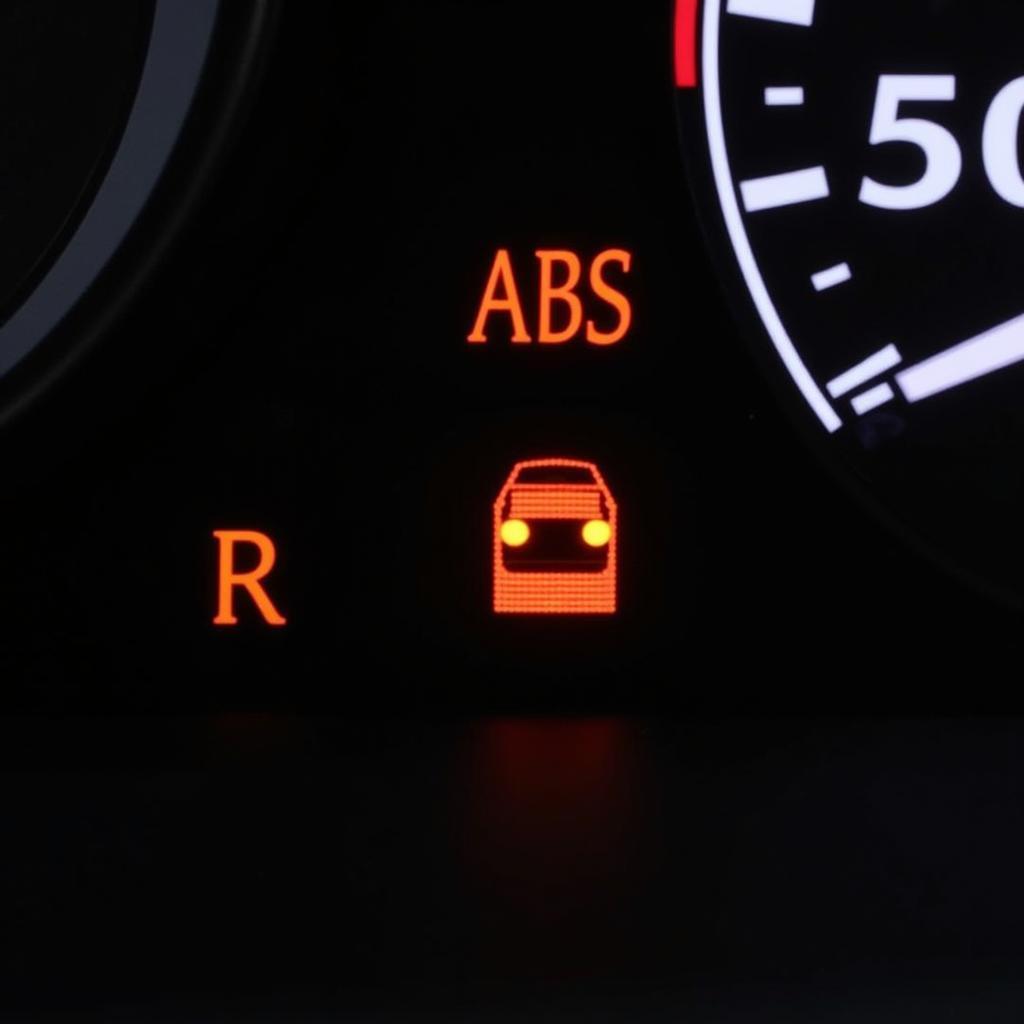 ABS, Traction Control, and Brake Warning Lights Illuminated
ABS, Traction Control, and Brake Warning Lights Illuminated
Diagnosing the Problem
Diagnosing the exact cause of the “abs traction control brake warning lights all come on” issue requires a systematic approach. Start by checking your brake fluid level. If it’s low, top it off and see if the lights go out. However, low brake fluid often indicates a leak, so further inspection is crucial. Next, consider checking your brake light switch, as a faulty switch can sometimes trigger these warning lights.
If these simple checks don’t resolve the issue, you may need a more advanced diagnostic tool, such as an OBD-II scanner, to read the error codes stored in your vehicle’s computer. These codes can pinpoint the specific problem area. If you encounter issues with brake warning lights and ABS in a van, our article on brake ABS and traction warning light on a van might be relevant.
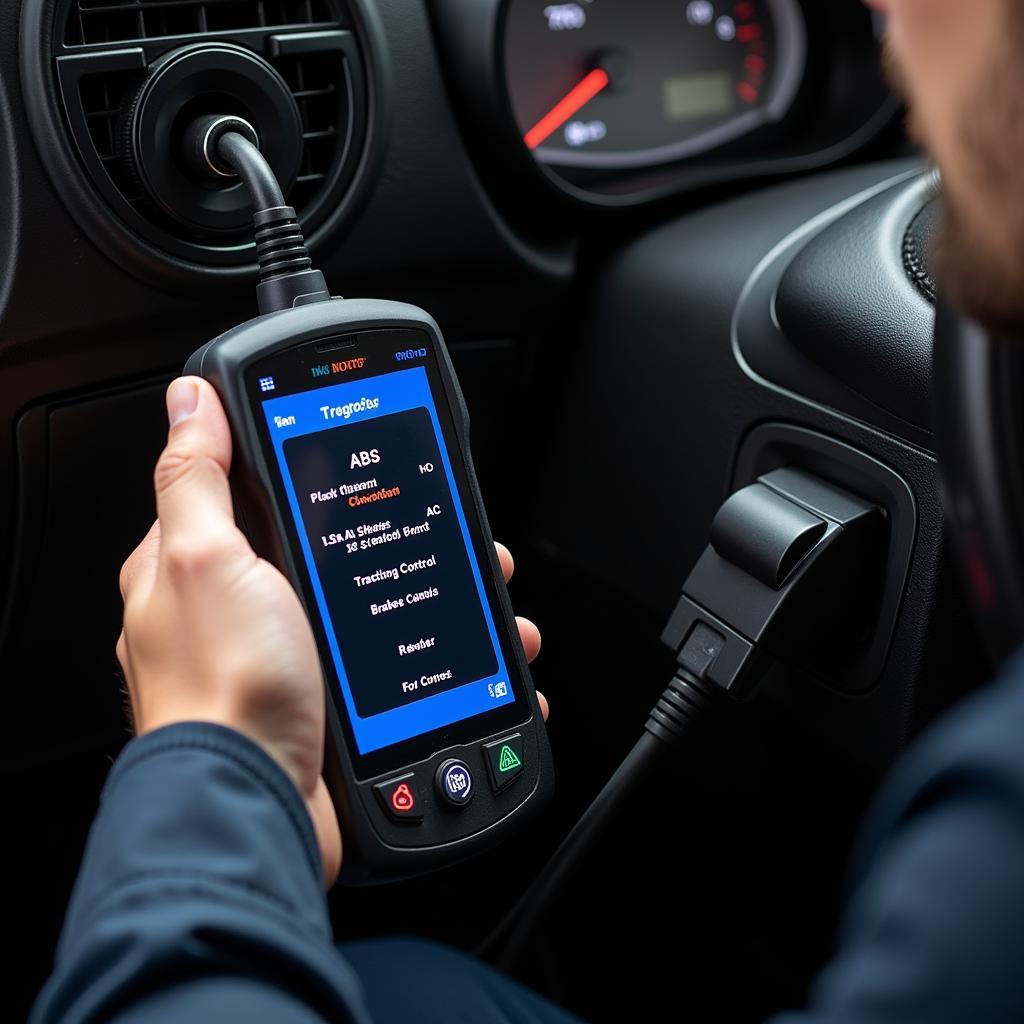 Using an OBD-II Scanner for Car Diagnostics
Using an OBD-II Scanner for Car Diagnostics
“When these three lights come on together, it’s often a sign of a sensor issue, especially a wheel speed sensor. While a low battery can sometimes cause temporary glitches, it’s rarely the root cause,” says John Miller, a seasoned automotive diagnostic technician.
Remote Diagnostics and Software Solutions
Modern technology allows for remote diagnostics and software programming to address certain car problems. Remote diagnostics can help identify the issue without physically accessing the vehicle, while remote software updates can fix software glitches in the ABS or traction control systems.
You can find helpful information regarding BMW brake warning light problems, especially concerning ABS and DSC issues, in our resource: BMW ABS DSC brake warning light problem 4×4.
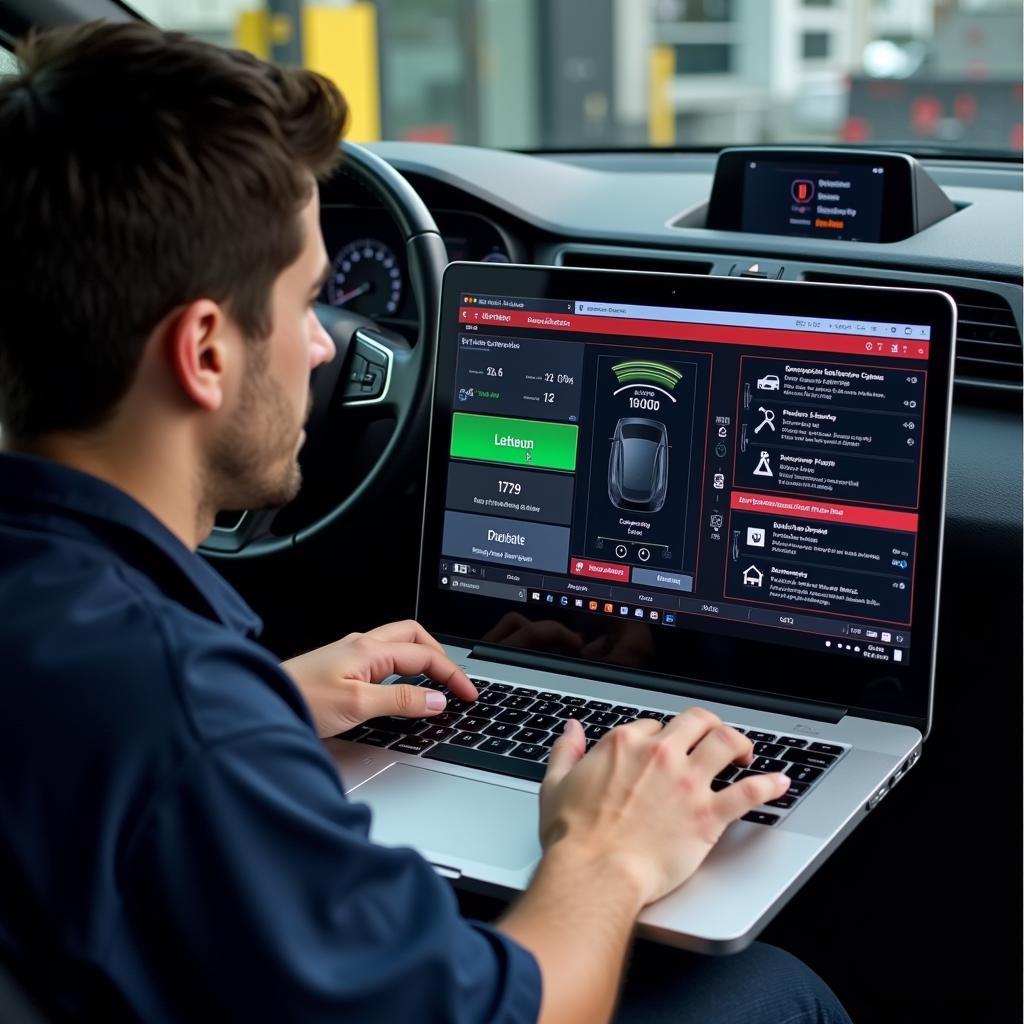 Mechanic Performing Remote Car Diagnostics
Mechanic Performing Remote Car Diagnostics
Conclusion
The “abs traction control brake warning lights all come on” scenario can be daunting, but understanding the potential causes and diagnostic steps can empower you to address the issue effectively. From simple checks like brake fluid levels to more advanced diagnostics using an OBD-II scanner or remote diagnostic services, there are solutions available to get your car back on track. Remember to prioritize safety and consult a qualified mechanic if necessary. Don’t ignore these warning signs, as a properly functioning braking system is crucial for your safety and the safety of others.
Do you have questions regarding brake warning lights? Here are some frequently asked questions.
FAQ
-
What should I do if the warning lights come on while driving? Safely pull over, check your brake fluid, and assess the situation. If unsure, contact a mechanic.
-
Can I drive with these warning lights on? It’s not recommended. Your braking system may not function optimally.
-
How much does it typically cost to fix this issue? The cost varies depending on the underlying cause and can range from a simple fluid top-up to more expensive repairs.
-
Can a DIYer fix this problem? Some simple checks and fixes are possible, but more complex issues may require professional help. If you’re experiencing a red line warning brake issue, check out our article: red line warning brake les.
-
How can I prevent this problem in the future? Regular maintenance, including brake fluid checks and inspections, can help prevent these warning lights from coming on.
-
Is it safe to drive if only the ABS light is on? While your regular brakes should still function, the ABS will be disabled, affecting braking performance in emergency situations.
-
What if the warning lights come on intermittently? This could indicate a loose connection or a failing sensor. A proper diagnosis is essential.

